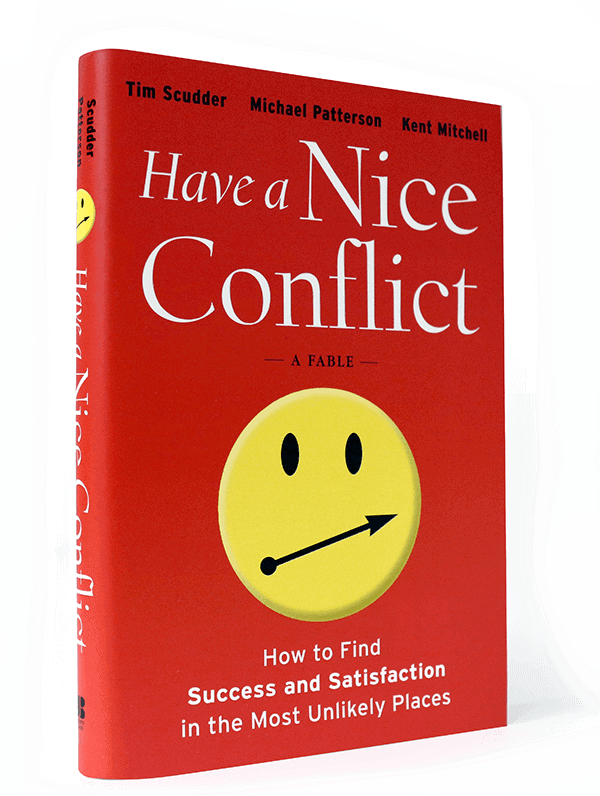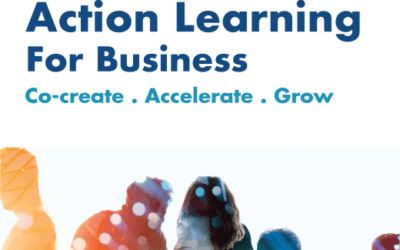“Have a Nice Conflict” by Tim Scudder, Michael Patterson, and Kent Mitchell is a practical guide to transforming workplace conflicts into opportunities for growth and collaboration. The book introduces the Conflict Dynamic Profile (CDP), a tool for understanding and managing conflicts effectively. It outlines strategies for recognizing the underlying causes of conflicts, navigating through them constructively, and fostering a culture of open communication and mutual respect within organizations.
The authors define conflict as a natural and inevitable aspect of human interaction, emphasizing that it can be either destructive or constructive depending on how it is managed. They introduce the concept of the Conflict Loop, which consists of three stages: “Trigger,” “Response,” and “Result.” Understanding this loop is crucial for breaking negative patterns of conflict and promoting positive outcomes.
The book explores the five different conflict management styles: “Avoidance,” “Accommodation,” “Competition,” “Compromise,” and “Collaboration.” Each style has its strengths and weaknesses, and the authors provide practical tips for identifying and utilizing them effectively in various situations.
Central to the book’s message is the Conflict Dynamic Profile (CDP), a comprehensive assessment tool that helps individuals and teams understand their natural inclinations towards conflict and develop strategies for improvement. The CDP measures key aspects of conflict behavior, such as assertiveness, empathy, and problem-solving skills, providing valuable insights into personal and interpersonal dynamics.
Self-awareness and emotional intelligence are pivotal in managing conflicts. It’s important to reflect on our own conflict management styles and to cultivate empathy and understanding towards others. By recognizing and addressing their own triggers and biases, individuals can become more effective communicators and collaborators.
Here are some questions we’d encourage you to consider as part of your self-reflection work:
- How do my own conflict management styles impact my interactions with others in the workplace?
- What triggers me during conflicts, and how can I become more aware of these triggers to respond more effectively?
- In what ways can I cultivate empathy and understanding towards colleagues with different perspectives and communication styles?
- As a leader, how can I model constructive conflict resolution behaviours and create a culture that encourages open communication and collaboration?
- What strategies can I implement to transform destructive conflicts into opportunities for growth and innovation within my team or organization?
- How can I use the Conflict Dynamic Profile (CDP) to gain insights into my own conflict behaviour and areas for improvement?
- Are there any patterns or recurring themes in conflicts that I observe within my team or organization, and how can we address them proactively?
- What role does emotional intelligence play in effectively managing conflicts, and how can I further develop this skill set?
- How can I balance assertiveness and empathy in my approach to conflict resolution, ensuring that my needs are met while also considering the needs of others?
- What steps can I take to foster a culture of trust, transparency, and accountability within my team or organization, where conflicts are viewed as opportunities for learning and growth?
Leaders are encouraged to model constructive conflict resolution behaviours and to foster a culture of trust, transparency, and accountability. Through effective communication and conflict management, leaders can empower their teams to navigate challenges and achieve collective goals.
This book offers a comprehensive framework for understanding and managing conflicts in the workplace. By promoting self-awareness, empathy, and effective communication, the book empowers individuals and organizations to turn conflicts into opportunities for positive change and innovation. Whether you’re a team leader, HR professional, or individual contributor, this book provides valuable insights and practical strategies for navigating the complexities of human interaction with grace and skill.

Lead Vantage specializes in training leaders to effectively navigate conflicts, emphasizing the importance of seeing conflict as a natural occurrence that requires skillful management. Our approach focuses on developing the capability to address conflicts gracefully. Contact us to discover more about our services: https://leadvantage.ca/book-a-call/




